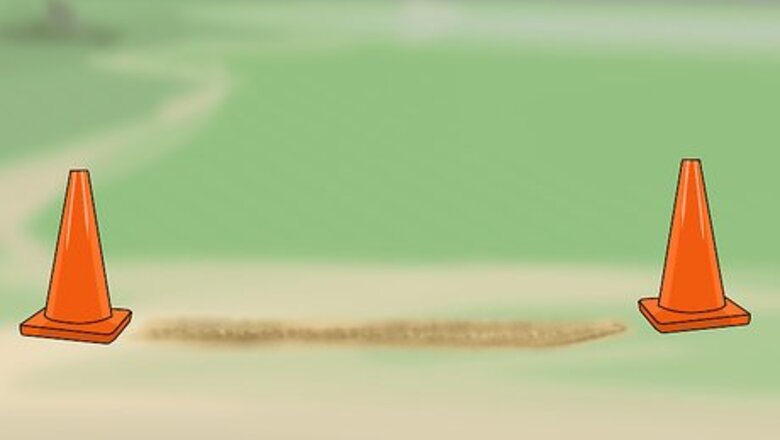
views
Organizing the Race

Identify a starting point. You’ll need to make clear to all participants that the race starts at a specific location, so that all teams have an even chance of winning. Use a cone or other easily visible object to mark the starting location, or create a starting line by dragging the heel of your shoe through the dirt. If you use a physical object, be sure to advise the participants not to trip over it.
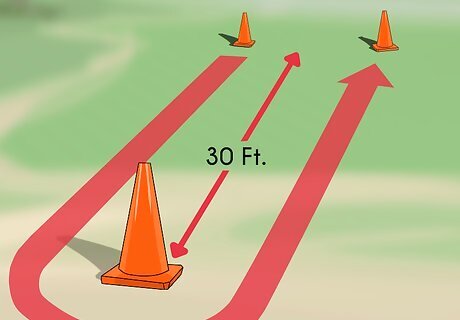
Mark a turn-around point for the participants. This point should be about 30 feet away from the starting line. You can mark it using a traffic cone or any other large, easily visible object. The racers will take off from the starting point, circle the turn-around point, and then race back to the starting line. The first team to cross the starting line will win the race.
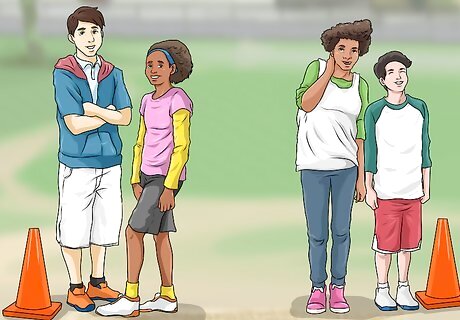
Break your participants into pairs. You’ll need two individuals per team to participate in a wheelbarrow race. Ask the competitors to split themselves up into teams. If you’re dealing with a large number of children, you may save yourself some time by asking them to choose their own pairs. Tell the children that they’ll need to decide who will be the “wheelbarrow” first. If you’re choosing the pairs who will race together, keep in mind that some children may naturally be more athletic than others. It may be smart to match a more athletic child with a less athletic counterpart, so that different teams can be competitive with one another.
Competing in a Wheelbarrow Race
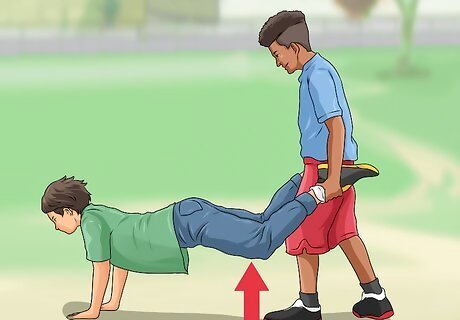
Ask the “wheelbarrows” to get in a push-up position. Have the teams line up evenly in front of the starting line. The first child in each pair should lay down on the ground with their arms bent and hands next to their chest, as if they’re about to perform a push up. Have the second child grab the first child’s legs and lift up, as the first child pushes their torso up off the ground. The wheelbarrow race derives its name from this pose, as the child whose hands are on the ground and feet are in the air looks something like a wheelbarrow.
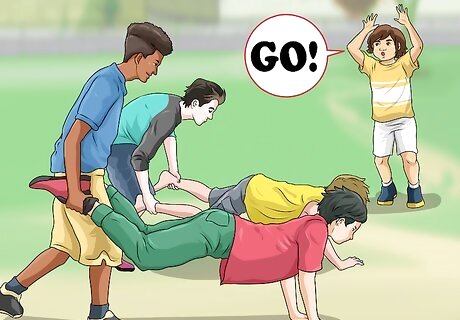
Begin the race! Once all of the pairs are in position, shout “On your mark, get set, go!” and let the competitors begin racing. The first child will set each pair’s pace; they have to “run” by placing one hand in front of the other, while the second child holds up the first child’s legs and runs to keep up. If necessary, remind the second child in each pair (the one standing) not to rush their teammate, or else the “wheelbarrow” racer may fall and slow the pair down.
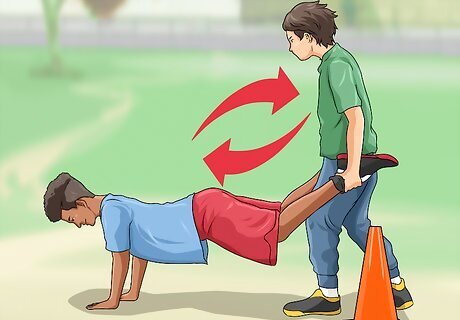
Have participants switch positions as they round the turn-around point. The individual who has served as the “wheelbarrow” will stand up, while their partner assumes a push-up position. The standing individual should grab the ankles of their partner, effectively reversing the positions for the race back to the finish line. From here, the participants simply need to race back to the finish line.
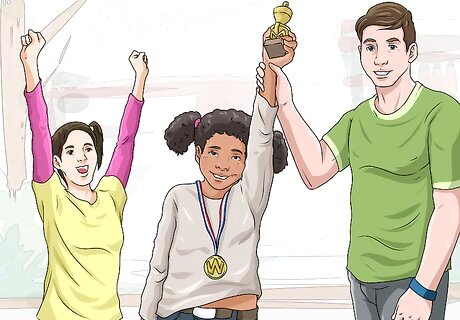
Announce the race’s winner. Keep track of the pairs as they cross the line, and announce the first-place winners as they arrive. If you like, you can also announce the second- and third-place teams. Allow the rest of the teams to finish the race at their own pace, and congratulate all of the wheelbarrow-race participants after all teams have crossed the finish line. If you’re overseeing this race at a run outdoor setting like a summer camp or a field day, it would be appropriate to reward the winning team with a small treat, like a soda or ice cream bar.
Racing with Physical Wheelbarrows
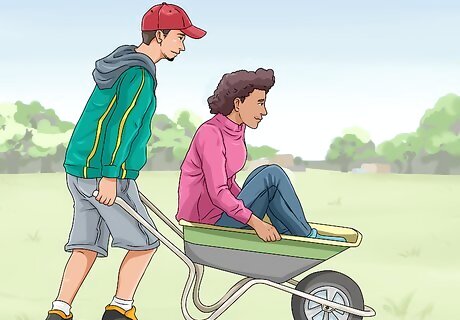
Ask competitors to arrive with their own wheelbarrow. In this version of the wheelbarrow race, adult competitors will still race in pairs of two, but one will sit in a physical wheelbarrow while the other pushes. Competitors should bring their own wheelbarrow. For the sake of convenience and courtesy, have a toolbox on hand in case one or more of the wheelbarrows malfunction. Make sure your toolbox contains wrenches in both regular and metric sizes and a variety of screwdrivers.
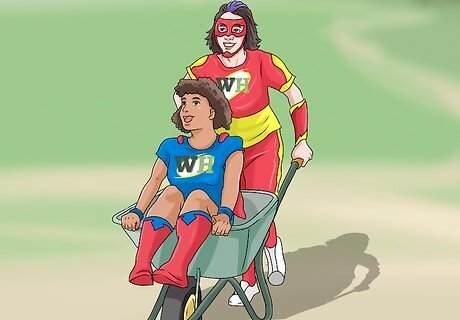
Give the race a theme. If you’re organizing the wheelbarrow race, be aware that races of this sort are often performed as a “Fun run” (something like a 5k, although much shorter) or to benefit a charity via fundraiser. Other wheelbarrow races function like bar or pub crawls, with participants racing from one bar to the next (you’ll likely need permission from your city to hold an event like this). Theming the race is optional; you can forego a theme if you’d prefer the competitors to focus on the race itself. Depending on the reasons for holding the wheelbarrow race, you (or the event organizers) can ask participants to dress up or decorate their wheelbarrows with fun costumes or paint.
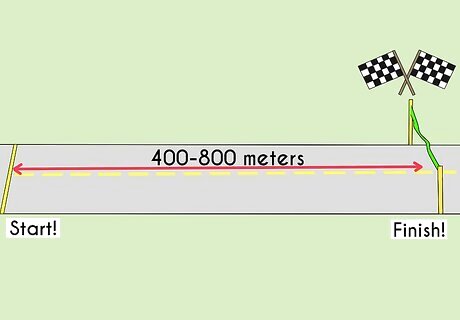
Mark a starting line and an ending point. Unlike the children’s version of this game, most adult wheelbarrow races do not have a turn-around point. In order to make the race challenging, the course should be fairly long; start out by establishing a quarter-mile (400 meters) track. If this doesn’t seem like an adequate distance for the competitors to race, lengthen the track to a half mile (800 meters). If you would like to mark the half-way point of the race track, you could ask participants to switch positions at that point. The seated individual could hop out and replace their partner pushing the wheelbarrow.

Reward the winners. Monitor the finish line and note the first, second, and third place teams. Depending on the purpose of the race, you could either give the winning teams a small cash prize (e.g. $20 for first place, $10 for second place, and $5 for third place), or donate a corresponding amount of money to a charitable organization.



















Comments
0 comment